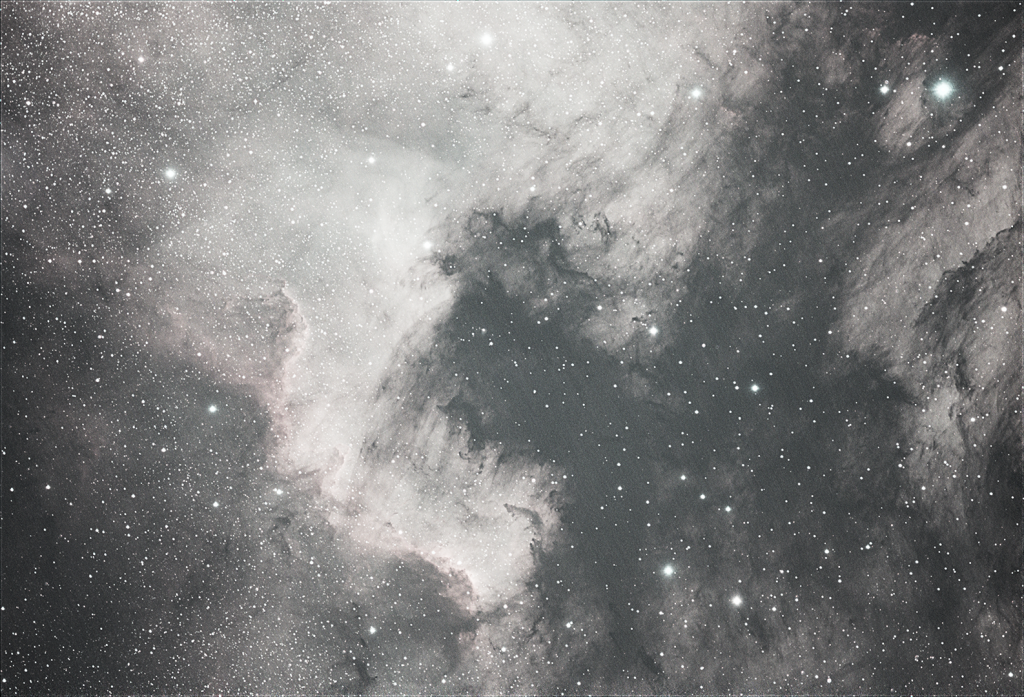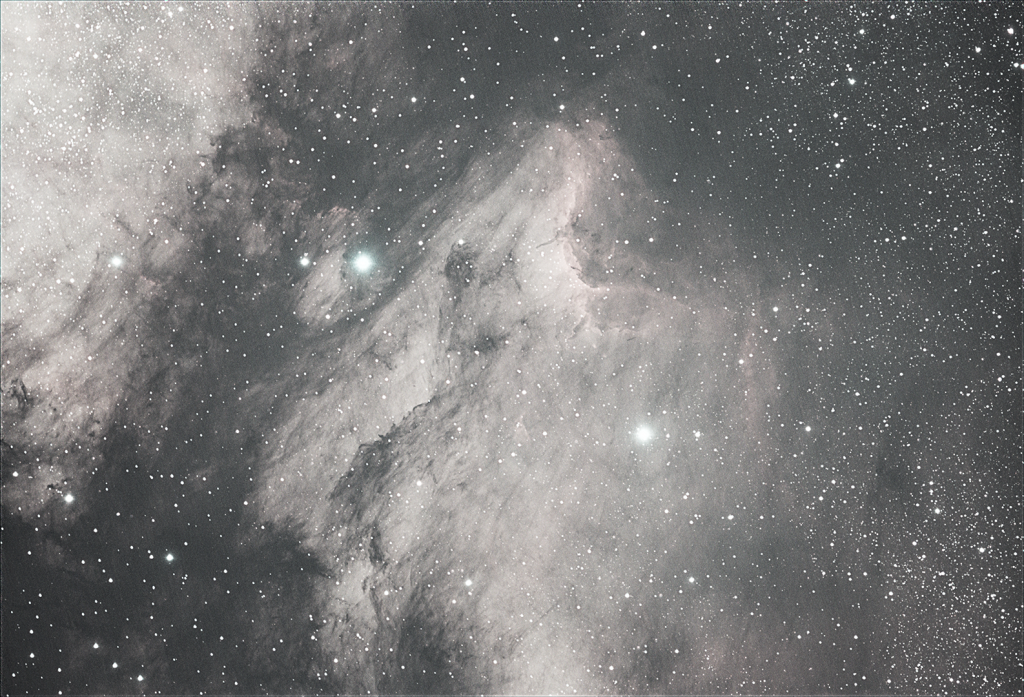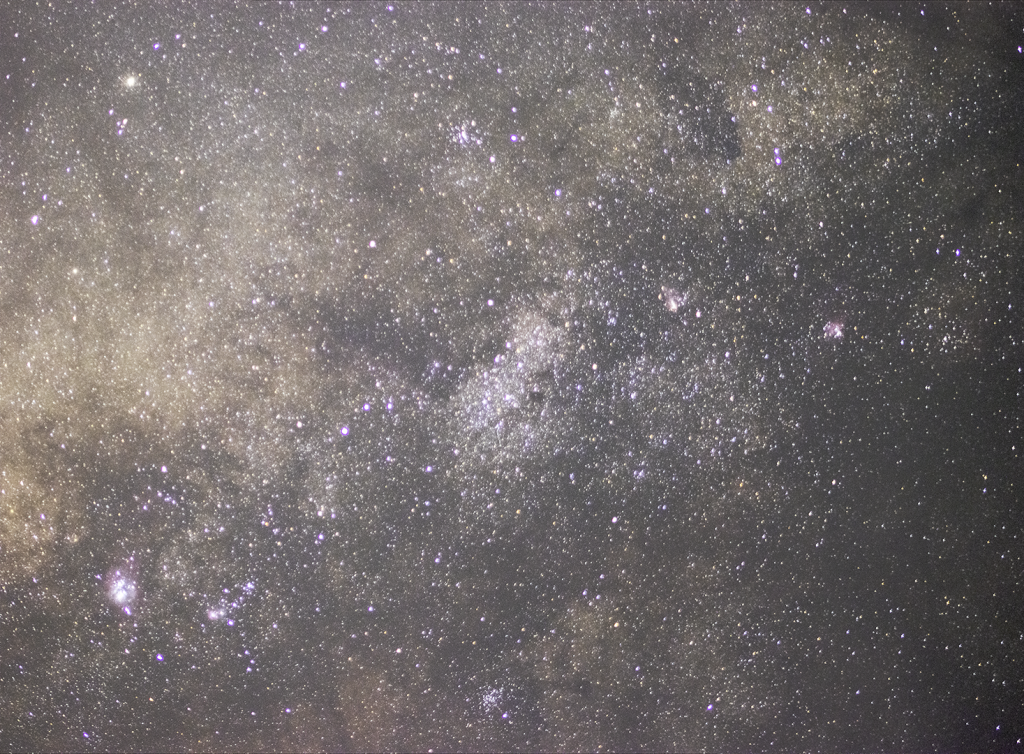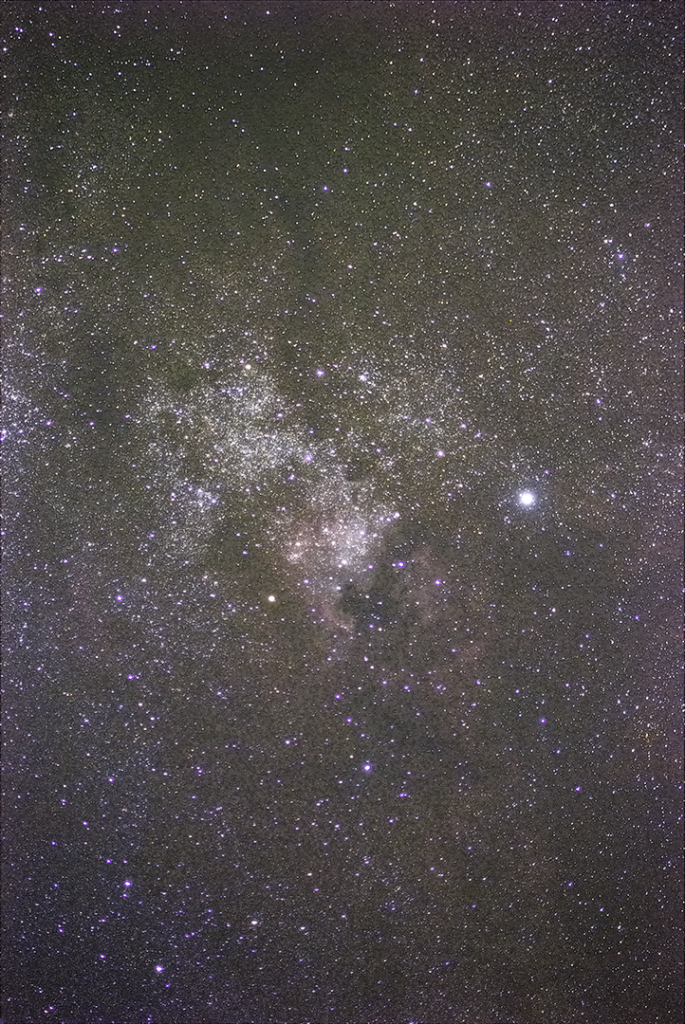As a follow-up to the DSLR image of the North American Nebula that I posted yesterday, Sunday evening I went back to the River Ridge Observatory and did a close up of that nebula and the adjacent Pelican Nebula. I used my 11″ SCT with Hyperstar and L-eNhance filter to shoot in three narrow frequencies. Each image is made from 40 sixty second images. I did a minimum of processing this morning as I had to get to work.In the first image you see the shape of North America and specifically the “Cygnus Wall” in “Mexico” and “Central America”. On the right hand edge you can see the start of the Pelican Nebula which is the focus of the second image.




